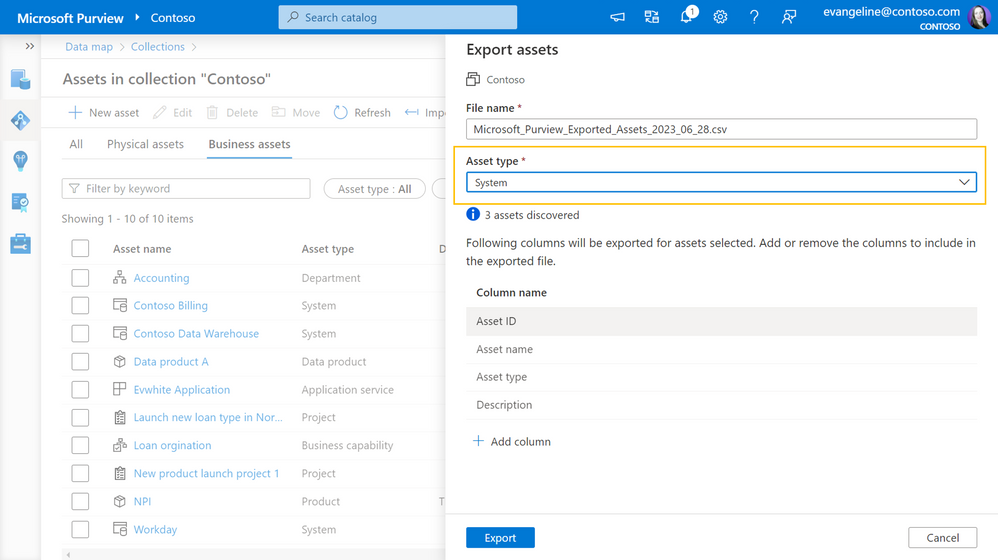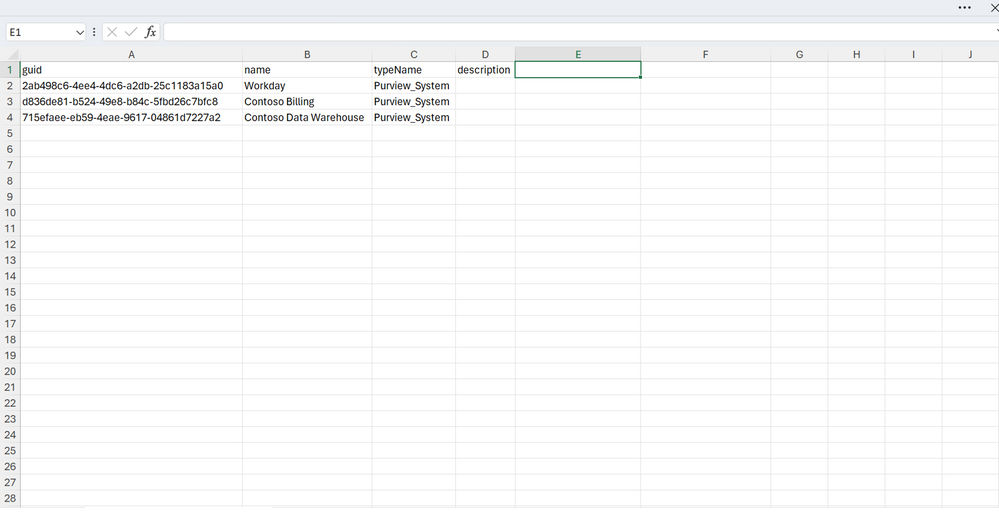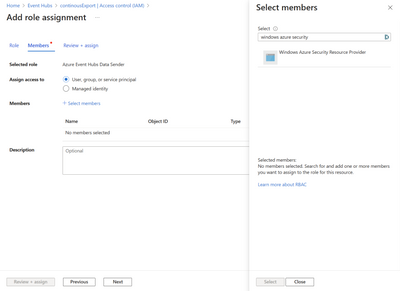
by Contributed | Jul 3, 2023 | Technology
This article is contributed. See the original author and article here.
In this issue:

Ace Aviator of the Month

What is your role and title? What are your responsibilities associated with your position?
I am a Senior Digital Architect with Sonata Software Europe Limited. I am responsible for delivering the right integration technologies to the customers. I interact with my team members to share the latest updates on various integrations and brainstorm the best fit for the client requirement. My manager provides me additional support in exploring new concepts and encourages us to do POCs with latest updates and share the knowledge to the wider forum.
Can you provide some insights into your day-to-day activities and what a typical day in your role looks like?
I plan my day beforehand, but it takes a different direction as it progresses. This is what my role demands. I am involved in multiple assignments and learn everyday with various challenges. More complex it is, the more growth is my thought, and this keeps me motivated throughout the day. I also offer guidance to other teams, and I get excited when the discussion or the task is for Logic Apps integration.
What motivates and inspires you to be an active member of the Aviators/Microsoft community?
My spouse, Santosh Ramamurthy, always motivates me in upgrading my skills. He supported my learning path and noticed my passion, he advised me to write blogs, sharing techniques via forums.
I started my career in 2006 and have been travelling with Microsoft Technologies for close to 17 years. With the limited resources those days, we had challenges in getting proper guidance. We referred to books and often learnt from our mistakes. I thought our future generation should have a strong foundation on technologies which they can pass on. So, I started writing blogs, attending forums, giving sessions which will motivate the people who are new to the technology or planning to switch the domain. Resources are abundant nowadays. How to use and where to apply is our skill. Logic Apps Aviators is a community which binds the people at all levels – be it beginner, intermediate or expert.
Looking back, what advice do you wish you would have been told earlier on that you would give to individuals looking to become involved in STEM/technology?
As I said earlier, resources are abundant. Learn to use, apply, make mistakes, correct them, and keep moving. Gone are the days where a high-speed PC or a classroom is needed to start your learning path. Most of the technologies are giving free trial and lab environments to encourage the individuals and give an attempt on the new skill. It is only the interest and the passion which keeps their learning spirit on.
What has helped you grow professionally?
Passion for learning new skills, handling complexities are my best teachers. Expand the network and time management is an important skill as we have numerous distractions around us. Tiny drops make a mighty ocean – so learning something new every day (be it simple concept or complex) and we are sure to trace the growth in the learning graph.
Imagine you had a magic wand that could create a feature in Logic Apps. What would this feature be and why?
Logic apps can create wonders in integration when some of the minor features can be incorporated to make them more friendly to the beginners.
For instance, when suggesting recurring API integration with D365FO via logic apps, there comes a question of creating a zipped package file. As most connectors are missing this action and even though azure functions / ADF / third-party tool comes to rescue, integration becomes simpler if available readymade.
Also, a feature to track the state of the previous run – this is needed for integrations to safeguard the data overlap and thus to cancel the run automatically if the previous execution is still in progress.
News from our product group:
News from our community:
Microsoft Previews .NET Framework Custom Code for Azure Logic Apps Standard
Post by Steef-Jan Wiggers
Read more about the public preview for .NET Framework Custom Code from Aviator’s own Steef-Jan!
Resolving 401 “Forbidden” Error When Deploying Logic Apps ARM Template
Post by Harris Kristanto
Harris discusses the issue of encountering a 401 Forbidden error during the deployment of Logic Apps ARM templates and provides steps to resolve it. Learn the potential causes of the error and suggests troubleshooting methods, including adjusting authentication settings and ensuring proper access permissions are set, to successfully deploy the Logic Apps template.
Compare Azure Messaging Services | How to Chose | Azure Service Bus vs Event Hub vs Event Grid
Post by Srikanth Gunnala
In this video Srikanth discusses Azure Messaging Services’ three most utilized components: Azure Service Bus, Azure Event Grid, and Azure Event Hub. See real-world applications and demonstrations on how these services ensure smooth communication between different parts of a software program.
Mastering GraphQL Resolvers for Cosmos DB
Post by Ryan Langford
Developers looking for more cloud skills should read Ryan’s post on mastering GraphQL Resolvers in Azure Cosmos DB. He covers everything from setting up your API Manager Instance to querying and mutating the graph in Azure Cosmos DB.
by Contributed | Jul 2, 2023 | Technology
This article is contributed. See the original author and article here.
Based on Lesson Learned #368: Connection Retry-Logic using ODBC API code – Microsoft Community Hub I would like to share but was my lesson learned execution TSQL command. Executing a TSQL command connectivity issues or command timeouts can occur, leading to failed executions. To overcome these challenges, it is essential to implement robust error-handling mechanisms. In this article, we will explore how to leverage the ODBC API to retry the execution of TSQL commands when faced with connection drops or command timeouts.
Implementing a Retry Mechanism: The following steps outline how to implement a retry mechanism using the ODBC API.
Catch the error: Surround the TSQL command execution with a try-catch block or equivalent error-handling mechanism. In the catch block, examine the error code or exception to identify connection drops or command timeouts.
Determine the retry conditions: Define the conditions under which a retry should occur. For example, you might retry when the error code corresponds to a dropped connection (e.g., SQLSTATE 08S01) or a command timeout (e.g., SQLSTATE HYT00).
Set a maximum retry limit: To prevent infinite retries, set a maximum retry limit. It is essential to strike a balance between allowing enough retries to handle temporary issues and avoiding prolonged execution times.
Introduce a delay between retries: To avoid overwhelming the database server, introduce a delay between retries. Exponential backoff is a popular technique where the delay increases exponentially after each retry, allowing the server time to recover.
Retry the execution: Once the retry conditions are met, re-execute the TSQL command using the same connection. Remember to handle any additional exceptions that may arise during the retry process.
Track retries: Keep track of the number of retries attempted to monitor the effectiveness of the retry mechanism. This information can be useful for troubleshooting and optimizing the system.
Code
public void MainRetry()
{
// Initialize ODBC environment handle
IntPtr environmentHandle = IntPtr.Zero;
String sErrorMsg = "";
Boolean bExecution = false;
SQLAllocHandle(1, IntPtr.Zero, out environmentHandle);
//SQLSetEnvAttr(environmentHandle, 201, (IntPtr)2, 0);
SQLSetEnvAttr(environmentHandle, 200, (IntPtr)380, 0);
bExecution = bMainRetryExecution(environmentHandle, ref sErrorMsg,"WAITFOR DELAY '00:02:50'",4 );
if(!bExecution)
{
Console.WriteLine("Error: " + sErrorMsg);
}
else
{
Console.WriteLine("Execution correctly");
}
SQLFreeHandle(1, environmentHandle);
}
public Boolean bMainRetryExecution(IntPtr environmentHandle,
ref string sErrorMsg,
string sQuery = "SELECT 1",
int iRetryCount = 1)
{
// Initialize ODBC connection and statement handles
Boolean bExecute = false;
int retryIntervalSeconds = 2;
for (int i = 1; i <= iRetryCount; i++)
{
try
{
IntPtr connectionHandle = IntPtr.Zero;
IntPtr statementHandle = IntPtr.Zero;
int retcode;
Console.WriteLine("Try to execute {0} of {1} Query: {2}", i, iRetryCount, sQuery);
retcode = SQLAllocHandle(2, environmentHandle, out connectionHandle);
if (retcode == -1)
{
sErrorMsg = "Not possible to obtain the environment Handle";
}
else
{
if (RetryLogicUsingODBCAPI(connectionHandle) == -1)
{
sErrorMsg = "Connection was not possible after the retries";
}
else
{
retcode = SQLAllocHandle(3, connectionHandle, out statementHandle);
if (retcode == -1)
{
sErrorMsg = "Not possible to obtain the statementHandle";
}
else
{
SQLSetStmtAttr(statementHandle, SQL_ATTR_QUERY_TIMEOUT, (IntPtr)(30*(i)), 0);
retcode = SQLExecDirect(statementHandle, sQuery, sQuery.Length);
if (retcode == -1)
{
GetODBCErrorDetails(statementHandle, 3);
sErrorMsg = "Error: not possible to execute the query.";
System.Threading.Thread.Sleep(1000 * retryIntervalSeconds);
retryIntervalSeconds = Convert.ToInt32(retryIntervalSeconds * 1.5);
}
else
{
SQLDisconnect(connectionHandle);
SQLFreeHandle(3, statementHandle);
SQLFreeHandle(2, connectionHandle);
sErrorMsg = "Command executed correctly";
bExecute = true;
break;
}
}
}
}
}
catch (Exception ex)
{
Console.WriteLine("Error: " + ex.Message);
sErrorMsg = "Error: " + ex.Message;
}
}
return bExecute;
}
Explanation:

by Contributed | Jul 1, 2023 | Technology
This article is contributed. See the original author and article here.
As organizações estão cada vez mais dependendo de tecnologias em nuvem para melhorar a eficiência e otimizar as operações no ambiente empresarial acelerado de hoje. À medida que a adoção da nuvem cresce, também aumenta a demanda por medidas de segurança robustas para proteger dados e aplicativos sensíveis. A certificação AZ-500 Microsoft Azure Security Technologies tem o objetivo de fornecer aos profissionais as habilidades e o conhecimento necessários para proteger a infraestrutura, os serviços e os dados do Azure.
A abordagem de Segurança Zero Trust, que parte do pressuposto de que todos os usuários, dispositivos e redes são não confiáveis e requerem verificação constante, é uma das metodologias de segurança mais críticas da indústria atualmente. À medida que as empresas adotam a tecnologia de Inteligência Artificial (IA), surgem novas preocupações de segurança, tornando crucial que as organizações se mantenham atualizadas nas práticas de segurança mais recentes.
Este guia de estudos fornece uma visão geral dos objetivos do exame AZ-500, que incluem controles de segurança, gerenciamento de identidade e acesso, proteção da plataforma, proteção de dados e aplicativos, além de recursos de governança e conformidade no Azure.
O que esperar no exame
O Exame AZ-500 mede o conhecimento do aluno em implementar, gerenciar e monitorar a segurança de recursos no Azure, em ambientes multi-cloud e híbridos. Isso inclui recomendação de componentes de segurança e configurações para proteger identidade e acesso, dados, aplicativos e redes.
O exame consiste em 40 a 60 perguntas e tem duração de 180 minutos. Você pode encontrar perguntas de múltipla escolha, bem como perguntas de arrastar e soltar e perguntas de área ativa na tela.

Recursos adicionais de aprendizado
Se você não tem muita familiaridade com computação em nuvem, recomendo estudar a trilha Azure Fundamentals:
As porcentagens indicadas em cada tópico da prova são referentes ao peso / volume de questões que você poderá encontrar no exame.
AZ-500 Microsoft Azure Security Technologies
Gerenciar identidade e acesso (25-30%)
Para gerenciar efetivamente identidade e acesso, os alunos devem ser capazes de projetar e implementar soluções de acesso seguras, como multi-factor authentication e políticas de acesso condicional. Eles também devem ter um bom entendimento do Azure Active Directory e ser capazes de gerenciar contas de usuário, grupos e funções.
Tópicos abordados:
Rede segura (20-25%)
Os alunos devem ser capazes de projetar e implementar soluções de rede seguras, como redes virtuais privadas (VPNs), Azure ExpressRoute e Azure Firewall no que se refere à segurança de rede. Eles também devem entender os grupos de segurança de rede (NSGs) e a proteção contra DDoS do Azure.
Tópicos abordados:
Compute, armazenamento e bancos de dados seguros (20-25%)
Os alunos devem estar familiarizados com recursos de segurança do Azure, como Azure Security Center e Azure Key Vault, para garantir a segurança de computação, armazenamento e bancos de dados. Além disso, eles devem ser capazes de projetar e implementar soluções de armazenamento seguras, como criptografia do Azure Storage e Azure Backup. Eles também devem ser capazes de usar recursos de segurança de banco de dados, como auditoria do Azure SQL Database e Criptografia de Dados Transparente (TDE).
Tópicos abordados:
Gerenciar operações de segurança (25-30%)
Por fim, os alunos devem ser capazes de gerenciar operações de segurança de forma eficaz. Isso inclui monitorar logs e alertas de segurança, responder a incidentes de segurança e implementar políticas e procedimentos de segurança. Eles também devem ter um bom entendimento dos requisitos de conformidade, como GDPR e HIPAA.
- Planejar, implementar e gerenciar a governança para segurança
- Gerenciar a postura de segurança usando o Microsoft Defender para Nuvem
- Configurar e gerenciar a proteção contra ameaças usando o Microsoft Defender para Nuvem
- Configurar e gerenciar soluções de automação e monitoramento de segurança

Documentação técnica
Azure Active Directory: Gerencie identidades de usuários e controle o acesso a seus aplicativos, dados e recursos com o Microsoft Azure Active Directory (Azure AD), um componente do Microsoft Entra.
Azure Firewall: Saiba como instalar e configurar o Firewall do Azure, um serviço de segurança de rede baseado em nuvem.
Azure Firewall Manager: Descubra como configurar o Azure Firewall Manager, um serviço de gerenciamento de segurança global.
Azure Application Gateway: Descubra como criar gateways de aplicativos. Esta documentação ajudará você a planejar, implantar e gerenciar o tráfego da Web para seus recursos do Azure.
Azure Front Door e CDN: O Azure Front Door é um ponto de entrada escalonável e seguro para fornecer aplicativos Web globais rapidamente.
Web Application Firewall: O Web Application Firewall (WAF) protege seus aplicativos da Web contra explorações e vulnerabilidades comuns. O WAF pode ser implantado no Azure Application Gateway ou no Azure Front Door Service.
Azure Key Vault: Aprenda a usar o Key Vault para gerar e gerenciar chaves que permitem acessar e criptografar recursos, aplicativos e soluções em nuvem. Tutoriais, referências de API e muito mais estão disponíveis.
Políticas Azure virtual network service endpoint: As políticas de endpoint de serviço de rede virtual (VNet) filtram o tráfego de rede virtual de saída para contas de armazenamento do Azure no ponto de extremidade de serviço e permitem a exfiltração de dados para contas específicas. As conexões de ponto de extremidade de serviço para armazenamento do Azure permitem controle de acesso granular para tráfego de rede virtual.
Manage Azure Private Endpoints – Azure Private Link: A configuração e implantação de endpoints privados do Azure são adaptáveis. Consultas de link privado revelam GroupId e MemberName. Os valores GroupID e MemberName são necessários para configurar um endereço IP estático para um endpoint privado durante a criação. O endereço IP estático e o nome da interface de rede são propriedades de terminal privado. Crie o terminal privado com essas propriedades. Um provedor de serviços e um consumidor devem aprovar uma conexão de serviço de link privado.
Crie um serviço de link privado usando o portal do Azure: Comece desenvolvendo um serviço de Link Privado que se refira ao seu serviço. Permita o acesso do Link Privado ao seu serviço ou recurso protegido pelo Azure Standard Load Balancer. Os usuários do seu serviço têm acesso privado de sua rede virtual.
Azure DDoS Protection Standard: Saiba como a Proteção DDoS do Azure, quando combinada com as práticas recomendadas de design de aplicativos, fornece defesa contra ataques DDoS.
Endpoint Protection em VMs Windows no Azure: Saiba como instalar e configurar o cliente Symantec Endpoint Protection em uma máquina virtual (VM) existente do Windows Server. Este cliente completo inclui proteção contra vírus e spyware, um firewall e prevenção contra invasões. Usando o VM Agent, o cliente é instalado como uma extensão de segurança.
Políticas de uso e segurança – Azure Virtual Machines: É fundamental manter sua máquina virtual (VM) segura para executar aplicativos. Proteger suas VMs pode incluir um ou mais serviços e recursos do Azure que cobrem o acesso seguro à VM e o armazenamento de dados. Este artigo ensinará como proteger sua máquina virtual e seus aplicativos.
Security – Azure App Service: Descubra como o Serviço de Aplicativo do Azure pode ajudá-lo a proteger seu aplicativo Web, back-end de aplicativo móvel, aplicativo de API e aplicativo de funções. Ele também demonstra como proteger ainda mais seu aplicativo usando os recursos integrados do Serviço de Aplicativo. Os componentes da plataforma do Serviço de Aplicativo, como máquinas virtuais do Azure, armazenamento, conexões de rede, estruturas da Web, gerenciamento e recursos de integração, são ativamente protegidos e reforçados.
Azure Policy: Com definições de política que impõem regras e efeitos para seus recursos, o Azure Policy ajuda você a gerenciar e prevenir problemas de TI.
Visão Geral do Microsoft Defender for Servers: O Microsoft Defender for Servers protege seus servidores Windows e Linux em execução no Azure, Amazon Web Services (AWS), Google Cloud Platform (GCP) e on-premises. A detecção e resposta de endpoint (EDR) e outros recursos de proteção contra ameaças são fornecidos pela integração do Defender for Servers com o Microsoft Defender for Endpoint. Descubra como projetar e planejar uma implantação bem-sucedida do Defender for Servers.
Microsoft Defender for Cloud: O Microsoft Defender for Cloud protege cargas de trabalho de nuvem híbrida com gerenciamento de segurança unificado e proteção avançada contra ameaças.
Visão Geral – Microsoft Threat Modeling Tool: O ciclo de vida de desenvolvimento de segurança da Microsoft depende da ferramenta de modelagem de ameaças (SDL). Ele permite que os arquitetos de software identifiquem e mitiguem potenciais problemas de segurança desde o início, quando eles são relativamente simples e baratos de corrigir. Reduz significativamente os custos de desenvolvimento. Projetamos a ferramenta para especialistas que não são de segurança para simplificar a modelagem de ameaças para todos os desenvolvedores, fornecendo orientações claras sobre como criar e analisar modelos de ameaças.
Azure Monitor: Serviços de monitoramento no Azure e no local. Métricas, logs e rastreamentos podem ser agrupados e analisados. Envie alertas e notificações ou use soluções automatizadas.
Microsoft Sentinel: Saiba como começar a usar o Microsoft Sentinel por meio de casos de uso. Com o SIEM reinventado para o mundo moderno, você pode ver e interromper as ameaças antes que elas causem danos. O Microsoft Sentinel oferece uma visão panorâmica da empresa.
Azure Storage: O Armazenamento do Azure fornece armazenamento para objetos, arquivos, discos, filas e tabelas. Há também serviços para soluções de armazenamento híbrido, bem como serviços para transferência, compartilhamento e backup de dados.
Azure Files: Compartilhamentos de arquivos em nuvem de nível empresarial que são simples, seguros e sem servidor.
Azure SQL: Encontre documentação para os produtos do mecanismo de banco de dados SQL do Azure na nuvem, incluindo banco de dados SQL do Azure, instância gerenciada do Azure SQL e SQL Server na VM do Azure.
Espero que este guia tenha sido útil na preparação para o exame de certificação AZ-500 e deseja a você boa sorte em sua jornada de certificação!

by Contributed | Jun 30, 2023 | Technology
This article is contributed. See the original author and article here.
One of the easiest ways to curate metadata is to pull all the information you need into a csv file so you work quickly in a spreadsheet, then make updates in bulk by importing information. You can now do this in Microsoft Purview.
Right now, you can only export one asset type at a time, and this only works for business assets. We plan to offer import and export for data assets in the future.
Exporting assets is easy. Just go to any collection, select business assets, and export:

Select the asset type you want to export. Reminder, we only support one asset type at time:

You’ll get csv of your assets, their guides, and the fields you chose to export. To import, just update the file with the information you want, and import into the right collection.

Thanks for reading!

by Contributed | Jun 29, 2023 | Technology
This article is contributed. See the original author and article here.
Introduction:
Have you ever found yourself in a situation where you needed to stream Microsoft Defender for Cloud data to another system? Microsoft Defender for Cloud provides the option of streaming data like recommendations and security alerts, to a Log Analytics workspace, event hub, or another SIEM solution. This capability is called continuous export.
Imagine if the system you want to stream Microsoft Defender for Cloud data is located behind the firewall. How would you go about doing that? This article teaches you how to accomplish this scenario by configuring export as a trusted service.
To configure Continuous export as a trusted service, you need to perform the following steps in sequence:
- Identify the destination event hub.
- Add the relevant role assignments on the destination event hub.
- Configure continuous export as a trusted service to use the destination event hub.
- Verify data is being exported to the destination event hub.
The first step is identifying the event hub used to stream data from Defender for Cloud, to the system located behind the firewall.
Identify the destination event hub
Event hub provides you with a way to ingest data and integrate with other Azure services, like Defender for Cloud. For the purposes of configuring continuous export to stream data located behind a firewall you can either use an existing event hub or create a new one.
To learn how to create a new event hub you can start at https://learn.microsoft.com/en-us/azure/event-hubs/event-hubs-quickstart-cli.
After you identify the event hub to be used as the destination for your Defender for Cloud data, you need to grant the continuous export service access the necessary permissions.
Add the relevant role assignment on the destination event hub
To add the necessary permissions, perform the following actions:
- Navigate to the Event Hubs dashboard.
- Click the destination Event Hub.
- Select Access Control > Add role assignment > Azure Event Hubs Data Sender.
- Click + Select members > Windows Azure Security Resource Provider (like in figure 1).
- Select > Review + assign.
 Figure 1. Adding the relevant role assignment on the destination event hub
Figure 1. Adding the relevant role assignment on the destination event hub
After you add the relevant permissions to the event hub, you can proceed to the next step of configuring continuous export.
Configure continuous export as a trusted service to use the destination event hub
To configure continuous export, you need to have write permissions on the event hub policy. Imagine you wanted to stream data related to recommendations and security alerts in near real-time, to a system located behind a firewall. To achieve this scenario, perform the following actions:
- Navigate to the Cloud for Cloud dashboard.
- Select Environment settings.
- Click the desired subscription.
- On the left, select Continuous export.
- Select Event hub.
- Select Security recommendations and Security alerts.
- Under Export frequency select streaming updates.
- Ensure Export as a trusted service is selected (like in figure 2).
- Choose the destination event hub.
 Figure 2. Ensure that Export as a trusted service is selected
Figure 2. Ensure that Export as a trusted service is selected
If you need further guidance on how to configure continuous export as a trusted service you can start here.
After you perform these actions, you can optionally verifying that data is being sent to the destination event hub.
Conclusion:
Configuring continuous export as a trusted service to event hub, allows you to stream Defender for Cloud data to a system located behind a firewall. For the purposes on this article, I focus on teaching you how to configure continuous export with the portal. However, for large organizations it’s recommended to use something like Azure policy to configure this scenario at scale. To configure continuous export as a trusted service to event hub you can use the following Azure policy: Deploy export to Event Hub as a trusted service for Microsoft Defender for Cloud data. The respective policy definition ID is af9f6c70-eb74-4189-8d15-e4f11a7ebfd4.
Reviewers:
Arik Noyman, Principal Group Software Engineering Manager,
Or Serok Jeppa, Senior PM Lead,
Sulaiman Abu Rashed, Software Engineer II


Recent Comments